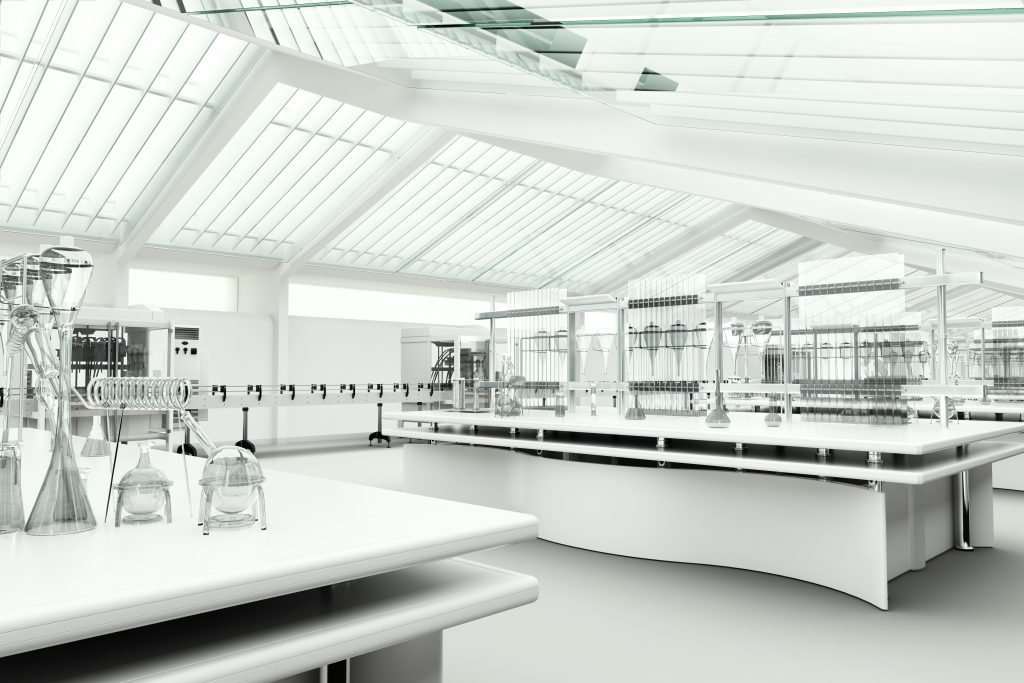Don’t let energy efficiency tie you in knots
15 Aug 2017 by Evoluted New Media
Laboratories are some of the most sophisticated man made environments on the planet – however, as the complexity of these facilities grows, so does their energy usage. Here, John Rush explains how to make laboratories more energy efficient
Laboratories are some of the most sophisticated man made environments on the planet – however, as the complexity of these facilities grows, so does their energy usage. Here, John Rush explains how to make laboratories more energy efficient
Laboratories are energy intensive environments, consuming between four to six times more energy per square metre than standard office or commercial buildings. This is mainly due to the energy intensive heating, ventilation and air conditioning (HVAC) systems necessary to ensure correct airflow and temperature. Because of this, any energy saving in HVAC can result in significant improvements in overall energy efficiency and impressive carbon emissions reduction. In fact, because the overall energy spend is so large when compared to other kinds of commercial buildings, even the smallest percentage saving could be valuable.
In our experience, good laboratory design can reduce energy consumption by an impressive 30–50%. One of the key reasons for this is that more than 60% of a laboratory’s energy consumption can be attributed to the HVAC system. According to a recent S-Lab audit and report, the UK’s major university laboratories consume over 730 kWh/m2/year. Laboratories normally use 100% fresh air to meet safety requirements, which demands between eight and 30 Air Changes per Hour (ACH). By comparison, in a typical commercial building as few as four ACH may suffice. It follows that safely and compliantly reducing the amount of air changes per hour in a laboratory, without impinging on performance, can significantly contribute to that 30–50% energy reduction.In our experience, good laboratory design can reduce energy consumption by an impressive 30–50%
So how do you make some of the most energy intensive facilities in the world more efficient?
Control contaminant sources
Designing a lab is a top down process that works hand in hand with good day to day practice to lessen contamination risks. A good design team can reduce the number of ACH if the contaminant sources can be successfully limited, which in turn reduces the amount of energy used by the HVAC system. Small behavioural changes, such as ensuring that each fume cupboard sash is closed when not in use, reducing the quantities of contaminants stored in the laboratory and introducing good handling practices to minimise contaminant release – such as keeping containers sealed or removing empty containers from the lab – significantly lessens the strain on the HVAC system. This allows the designer to identify the right volumetric flow rates and create a low energy HVAC design, bringing the facility closer to the lower end of the ACH scale.Direct digital controls
To reduce energy use in laboratories further, designers can introduce direct digital controls (DDCs), linked to variable air volume (VAV) dampers, for supply and extraction systems. DDCs provide variable flow control for fume cupboards, depending on their occupancy and overall variable flow control of the air supply. Presence detection at fume cupboards can also reduce face velocity, or the velocity across the sash opening. This further improves energy efficiency.Automatic occupancy controls can reduce the air change rates down to an absolute minimum at night or at weekends when labs are empty. This significantly reduces HVAC related energy usage. The US standard NFPA 45, which regulates fire protection for laboratories using chemicals, advises a minimum of four ACH per hour for unoccupied labs. However, in labs that don’t have a large number of contamination sources, designers can safely go even lower than that.
[caption id="attachment_63678" align="alignnone" width="620"] The smallest changes can have the largest effect on energy consumption.[/caption]
The smallest changes can have the largest effect on energy consumption.[/caption]
Energy recovery
Like any well-designed building, laboratories can make use of energy recovery technologies such as plate heat exchangers or run around coils. Heat exchangers are likely to need protection against dilute chemicals in the airstream using stainless steel, vinyl coated surfaces or tinned coils. Low pressure loss, high efficiency heat exchanger design will ensure that the heating and cooling energy gains are not compromised by the additional fan electrical energy needed.Extract fan energy reduction
Minimising the air charge rate and recovering energy provides the foundation for an energy efficient laboratory. Designers should then consider reducing the amount of energy used by the extraction fan itself. For example, introducing a variable stack orifice or multi stack discharge, rather than fresh air make-up, means that, when the flowrate reduces, stack discharge velocity is maintained. In contrast to this, the traditional use of fresh air make-up, to maintain stack discharge velocity, uses much more energy.Humidity control
Contrary to popular belief, humidity control in a lab is mainly required to increase the user’s comfort and rarely serves any other critical purpose. Humidity control requirements can be more relaxed in labs than in commercial buildings. Because of the amount of air exchange in laboratories, it is not economic or energy efficient to control relative humidity.Continuous improvement
Apart from the technical considerations essential for lab design and planning, there are a number of operational considerations to be addressed. The soft landings framework ensures the client works closely with designers, constructors and contractors to deliver buildings that achieve energy and environmental performance ambitions, while also focusing more on meeting the needs of occupants. The aim is to bridge the gap between predicted and achieved performance that can result from limitations in the brief, design and construction processes or from poor operation once the laboratory has been handed over to the user.A designer’s job does not end with the build. Once the laboratory is up and running, the lab owner should establish energy goals, track performance and share results for continuous improvement. Just because a lab was designed with energy efficiency in mind, it doesn’t mean the efficiency rating can’t be improved further using insight from day to day use. It is important to keep the designer in the loop as part of this process so that best practice can be updated. Such learning can be used to develop the current facility and contribute to best practise in the design of new facilities.Just because a lab was designed with energy efficiency in mind, it doesn’t mean the efficiency rating can’t be improved further using insight from day to day use
Similarly, existing laboratories can be made more energy efficient. Every laboratory is different, but they all have relatively long life spans that can run over 25 years or more. A lot can change in that time, so it’s important to keep in contact with the designer and consult with them about possible improvements.
Best practice for laboratory design and usage is changing all the time, but by working with an experienced specialist companies can ensure their facilities achieve high performance with lower energy usage, while still complying with all the relevant industry and building regulations.

Author: John Rush is a Member of the Chartered Institution of Building Services Engineers (MCIBSE) and a CIBSE Certification Registered Energy Assessor. He is currently Principal Engineer and has been working at Boulting Environmental Services for more than a decade.









